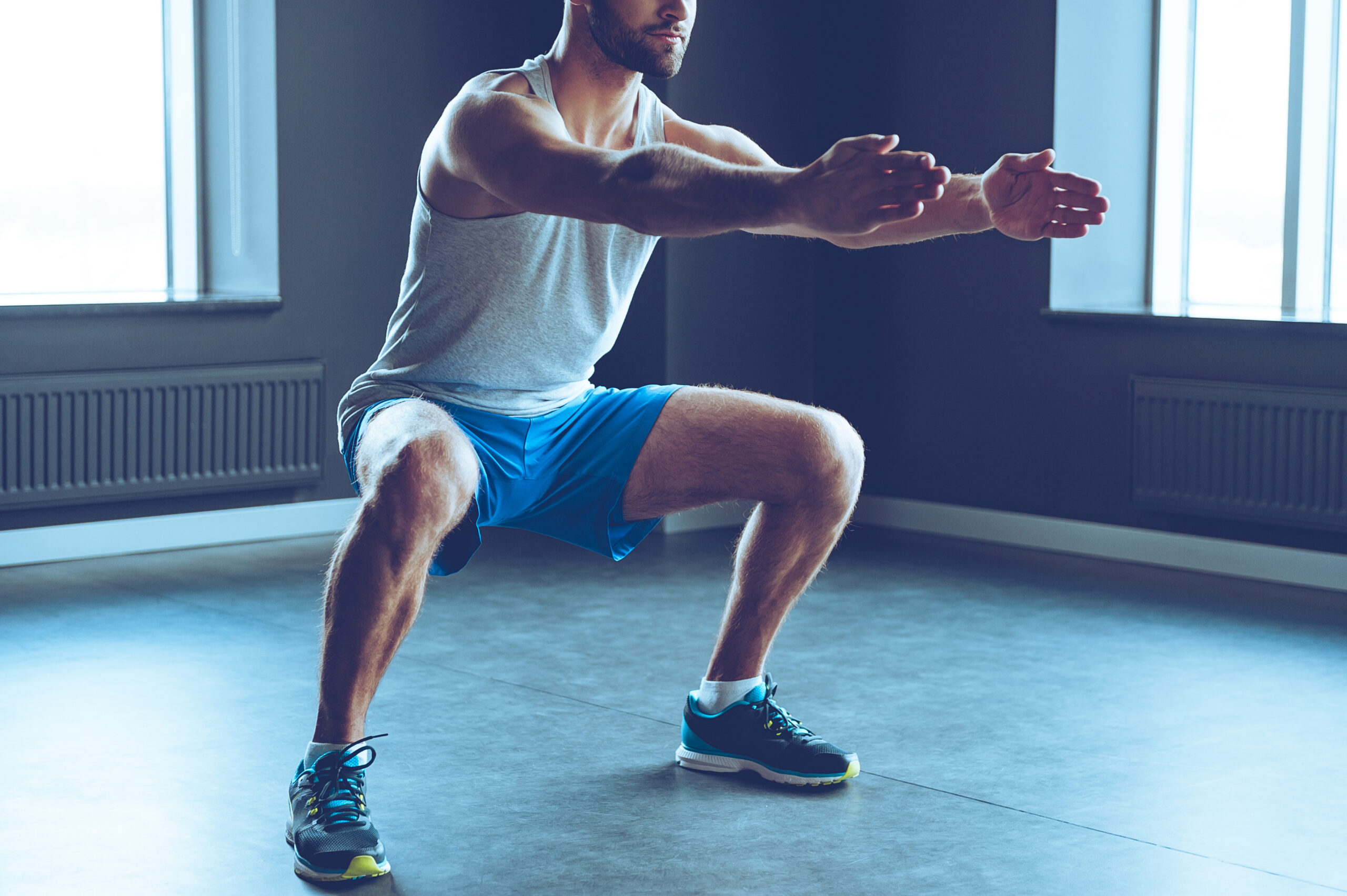Table of Contents

Squats, often called the king of exercises, build essential strength in major muscle groups while improving stability for people of all fitness levels when performed with proper technique.
At a Glance
- Squats target multiple muscle groups simultaneously, including quadriceps, hamstrings, glutes, and core muscles, making them highly efficient for full-body strength
- Proper form is crucial - maintaining an upright chest, engaged core, and knees tracking with toes helps prevent injury and maximize benefits
- For beginners, bodyweight squats focusing on form should precede weighted variations
- Regular squatting (3 sets of 10-20 reps, three times weekly) improves daily functional movement, joint health, and balance
- Multiple squat variations exist to target different muscle groups and accommodate individual mobility needs
Why Squats Deserve a Place in Your Workout Routine
Squats are considered a fundamental exercise for building lower body strength, muscle mass, and improving athletic performance. This compound movement efficiently engages multiple major muscle groups simultaneously, making it an excellent time-saving exercise for those with busy schedules. Regular squatting strengthens the quadriceps, hamstrings, glutes, and core muscles while enhancing stability throughout the entire kinetic chain. For adults over 40, these benefits become increasingly important as they help maintain mobility, prevent falls, and support everyday movements like climbing stairs or rising from a chair.
Beyond strength development, squats offer impressive health benefits that make them valuable for aging bodies. They improve bone density, which becomes increasingly important after 40 when natural bone loss accelerates. The functional movement pattern of squatting also enhances joint health by increasing synovial fluid circulation and strengthening the muscles that support knee and hip joints, areas commonly affected by age-related deterioration. Additionally, this compound exercise stimulates hormonal responses that support overall vitality and metabolism, countering the natural decline that occurs with aging.
Mastering Proper Squat Form
Proper squat form is crucial to avoid pain and injury while maximizing benefits. Begin by standing with feet approximately shoulder-width apart, with toes pointed slightly outward. Keep your chest up and proud while engaging your core muscles throughout the movement. Initiate the squat by pushing your hips back as if sitting in an invisible chair behind you, while simultaneously bending your knees. Throughout the movement, ensure your knees track in line with your toes and don't cave inward, which can stress the knee joints.
Aim to lower until your thighs are at least parallel to the ground, keeping your weight in your heels rather than shifting forward onto your toes. Maintain a neutral spine position throughout—neither rounded nor excessively arched. To return to standing, push through your heels while engaging your glutes and hamstrings to drive your hips forward. Many beginners benefit from practicing with a chair or bench behind them as a depth gauge or support. Using a mirror or recording yourself can help identify and correct form issues before they become problematic habits.
https://twitter.com/Michael_Osteo/status/1896502907756781877
Common Form Mistakes and How to Fix Them
Several common form issues can reduce the effectiveness of squats and potentially lead to injury. Knees caving inward (valgus collapse) is one of the most frequent problems, often resulting from weak glute muscles. To correct this, focus consciously on pushing your knees outward during the squat and consider using a resistance band around your thighs during warm-up sets to reinforce proper knee tracking. Rounding the back is another common error that places stress on the spine and can lead to injury.
Many people perform squats that are too shallow, missing much of the exercise's benefit. Aim to reach at least parallel depth (where thighs are parallel to the floor) for maximum muscle engagement. If mobility limitations prevent this, work gradually toward greater depth while maintaining proper form. Rising onto the toes or allowing heels to lift indicates weight distribution problems and can stress the knees. Focus on keeping weight in the heels and mid-foot throughout the movement, which may require improving ankle mobility or temporarily elevating the heels on small weight plates while working on flexibility.
Progressing Your Squat Journey
Once you've mastered basic bodyweight squats with good form, numerous variations can help progress your strength development. Goblet squats, holding a dumbbell or kettlebell at chest height, provide a natural counterbalance that helps maintain proper posture while adding resistance. Front squats shift emphasis to the quadriceps and core, while back squats allow for heavier loading to build overall lower body strength. For those with mobility limitations or balance concerns, box squats provide a controlled way to develop proper depth perception and confidence.
A recommended beginner routine includes three sets of 10-20 bodyweight or lightly weighted squats, performed three times weekly with recovery days between. As strength develops, implement progressive overload by gradually increasing weight, reps, or sets. Advanced techniques like pause squats (holding at the bottom position) or tempo squats (controlling the speed of movement) can further challenge muscles without necessarily requiring heavier weights—an important consideration for those with joint concerns. Remember that consistency trumps intensity, especially for those new to strength training or returning after a period of inactivity.
